See the Sites You've Read About
A popular travel trend is to visit locations of cherished movies and TV shows. From the Hobbiton Movie Set Tours in New Zealand (for all those Lord of the Rings fans) to Harry Potter or Downton Abbey filming location tours throughout London, you can get a firsthand look at the real buildings or man-made sets featured in the work.
Diving into a good book can also open doors to new worlds and experiences. Authors often choose real-world landmarks or locations for their fictional stories to play out and, with detailed descriptions, you can be transported to another time or another place. The next best thing is visiting these locations in person yourself! Here are a few sightseeing suggestions featuring five famous France landmarks featured in popular historic and modern classics.
Notre Dame | The Hunchback of Notre Dame by Victor Hugo
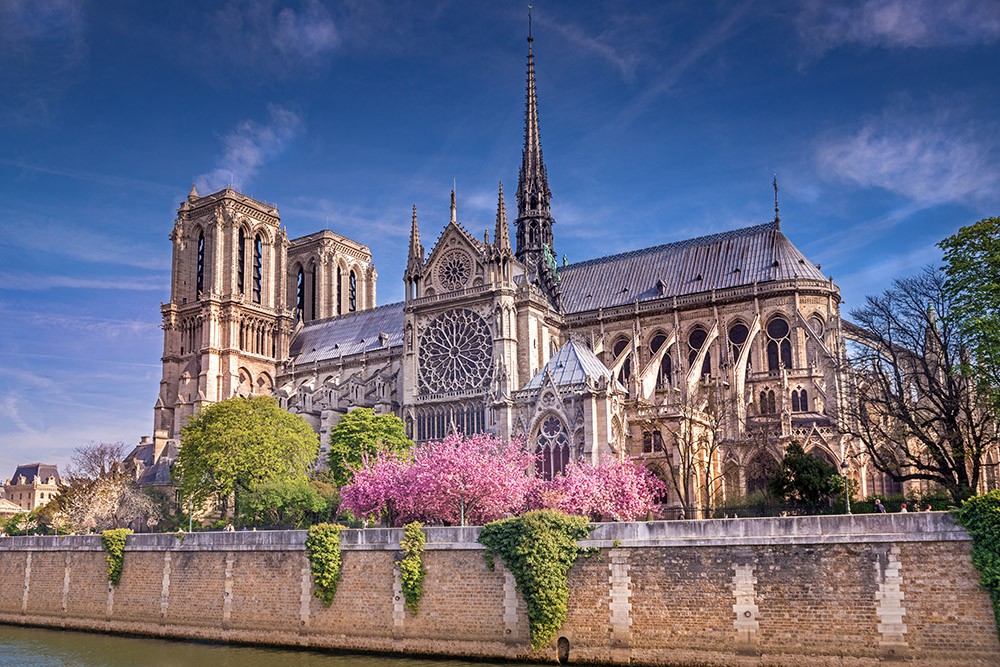
Published in 1831, this tragic story prominently features the Notre Dame de Paris, also known as Notre Dame Cathedral or simply Notre Dame, and one could argue the building itself is one of the main characters. During a time of change, when old buildings were being torn down and new styles erected, author Victor Hugo penned his renowned work to help preserve and bring awareness to the value of French Gothic structures. His detailed descriptions of Notre Dame throughout showcase his love for Gothic design. This book was a primary reason for a renewed interest in the architectural style and is credited for Notre Dame’s restoration and helping it become the icon it is today.
While the UNESCO World Heritage classified building suffered a fire in 2019 and is currently closed to the public, free guided tours around the property are still being conducted. You can admire the architectural techniques, design, and elements, including the gargoyles, during an expert-led one-hour tour. Restoration of the cathedral is underway and may be ready for a partial opening in April of 2024.
Chateau d’lf | The Count of Monte Cristo by Alexandre Dumas
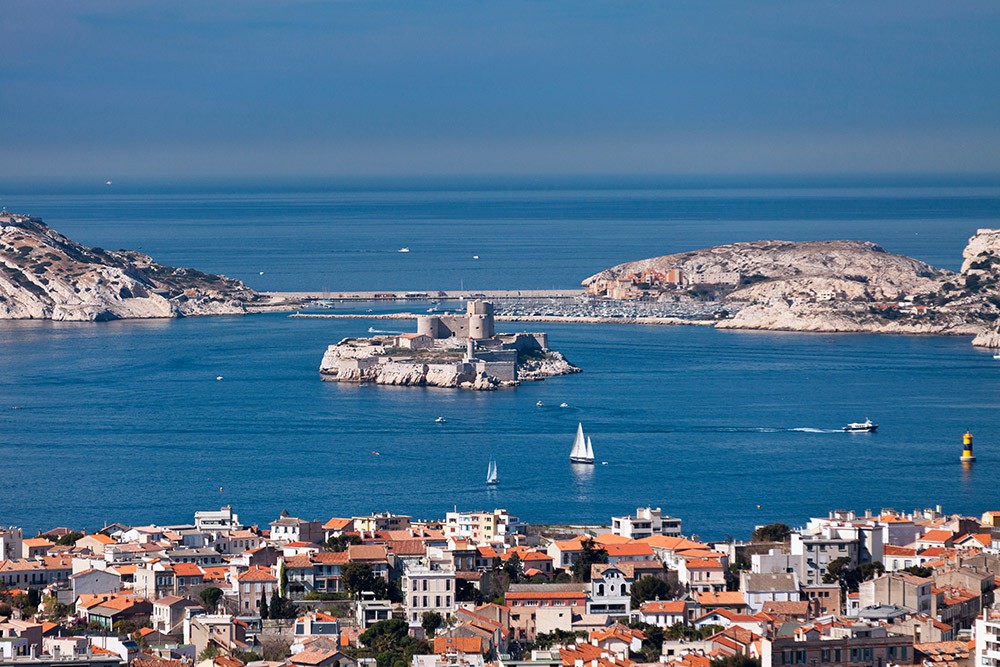
The fortress turned island prison, Chateau d’lf, is the predominant background for the First Act of the literary classic, the Count of Monte Cristo, published in 1844. The novel chronicles the story of a young man wrongfully imprisoned for treason and details his escape, acquisition of fortune, and how he exacts revenge on those who imprisoned him.

Located off Marseille, the fortress was originally built as a deterrent and point of defense from potential sea-based attacks, though it never was involved in attacks. Its remote “escape-proof” location made it an ideal place to keep prisoners for almost 300 years. Its role in The Count of Monte Cristo helped this castle become a tourist attraction, still to this day.
Only a short 20-minute boat ride from Old Port in Marseille, tours of the castle are available year-round with an average visit lasting about 2 hours.
Palais Garnier | The Phantom of the Opera by Gaston Leroux
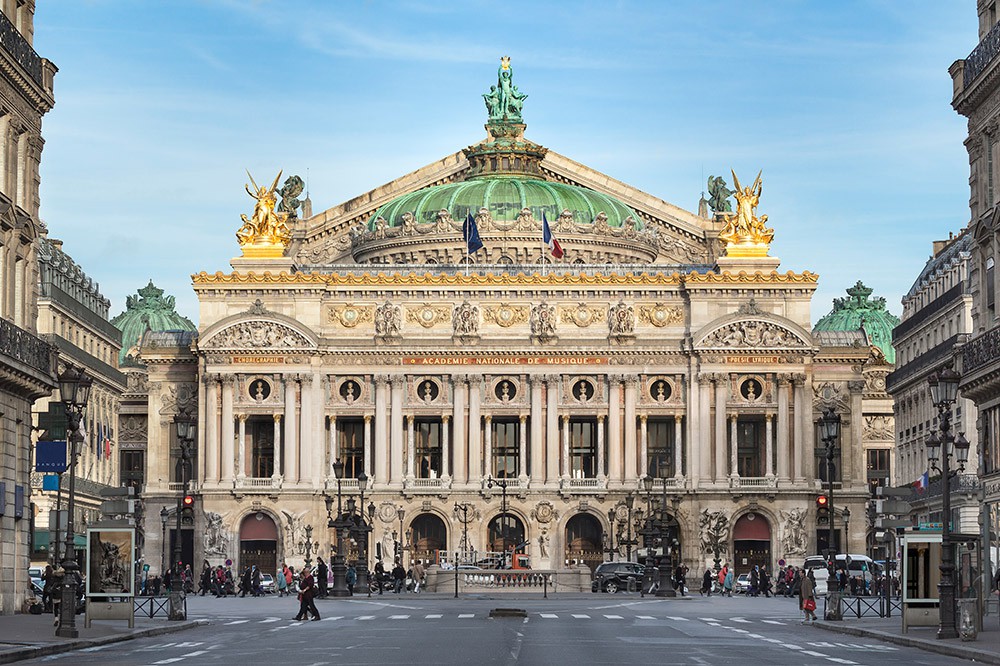
First published in serial form from 1909 to 1910, The Phantom of the Opera takes place in the very real Palais Garnier Opera House and is inspired by facts surrounding the construction of the building, such as there was an accident involving a chandelier dropping from the ceiling and a subterranean lake exists under the building. While not an actual lake, an underground cistern was built to deal with the problem of the groundwater level on the site.
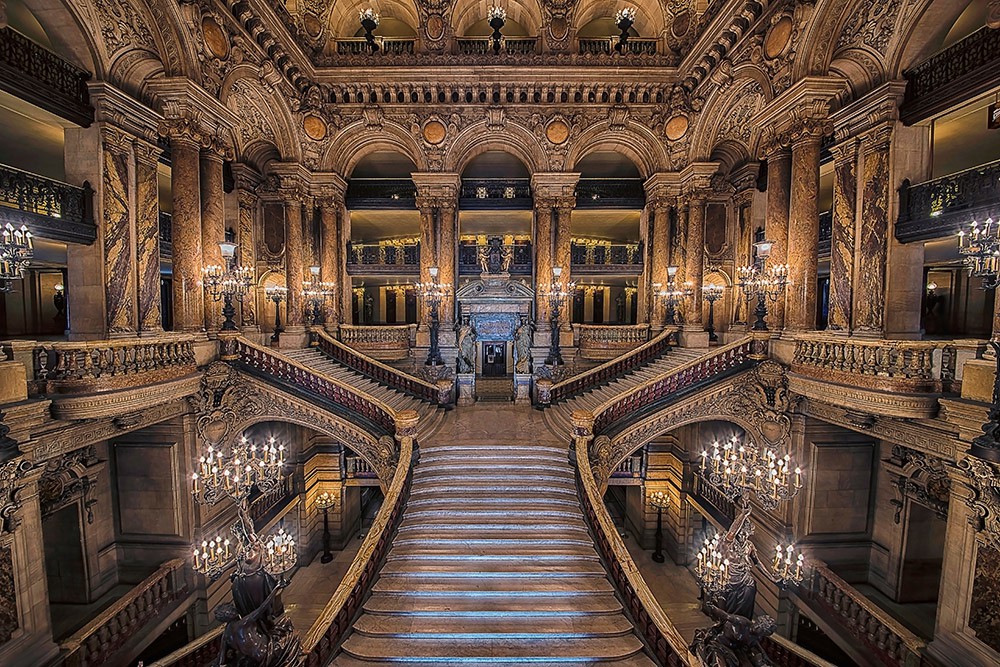 The building itself is absolutely extraordinary, from the ornate décor and sculptures to the stunningly beautiful painted ceilings to the exquisite detail given to every feature, inside and out. In fact, it was the most expensive building built at the time. Its unique blend of architectural styles influenced the design of many other buildings around the world including the Thomas Jefferson Building in Washington D.C., the Hanoi Opera House in Vietnam, and the Amazonas Theater in Manaus, Brazil. Today you can visit Palais Garnier for a self-guided or guided tour or take in the current opera or ballet performance.
The building itself is absolutely extraordinary, from the ornate décor and sculptures to the stunningly beautiful painted ceilings to the exquisite detail given to every feature, inside and out. In fact, it was the most expensive building built at the time. Its unique blend of architectural styles influenced the design of many other buildings around the world including the Thomas Jefferson Building in Washington D.C., the Hanoi Opera House in Vietnam, and the Amazonas Theater in Manaus, Brazil. Today you can visit Palais Garnier for a self-guided or guided tour or take in the current opera or ballet performance.
The Bastille | A Tale of Two Cities by Charles Dickens
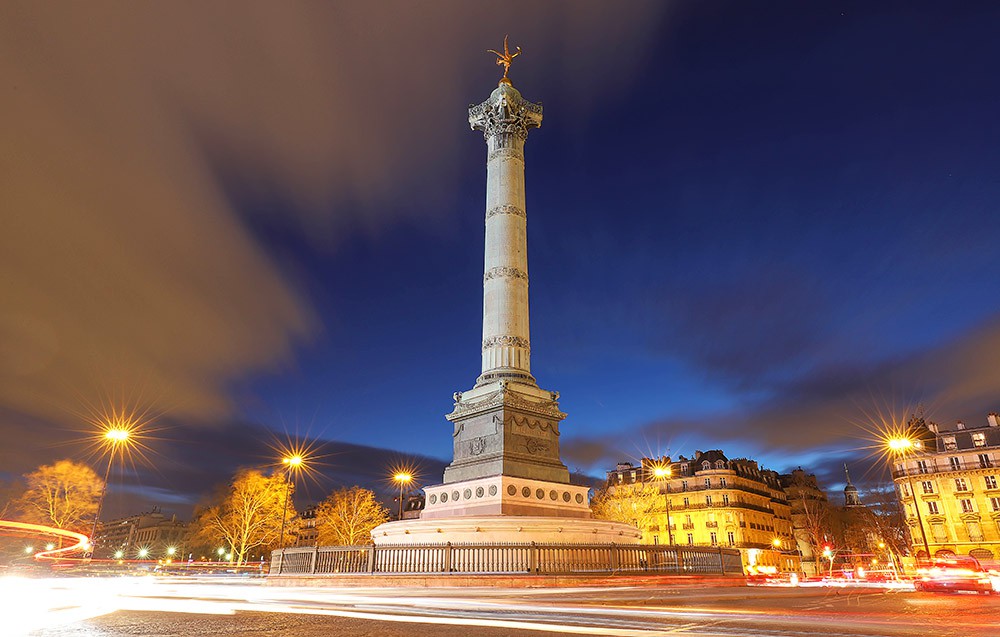
Paris is one of the cities featured in this historical fiction novel published in 1859, which tells the story of Doctor Alexandre Manette’s 18-year imprisonment in the Bastille prior to the French Revolution. After his release, he goes to London, the other city, to live with his daughter.
The Bastille was an actual fortress turned prison that was built in the 1370s and was controversial due to the varied reasons people were imprisoned. While actual criminals were housed, people with different religious beliefs or those who opposed the government or monarchy were thrown in there as well. The building became a symbol of abuse of power and in July 1789, revolutionary insurgents stormed their way in, seized control, and released the remaining seven prisoners. This takeover is one of the key events that led to the French Revolution, and the building was dismantled not long after.
While you cannot visit the actual Bastille, you can visit some remains and learn more about its history at the Carnavalet Museum and at the square where it once stood, the Place de la Bastille. In the center of the square is The Spirit of Freedom, a very tall, monumental column with a gold sculpture set atop. You can also visit Bastille remains around the city in some surprising locations.
The Louvre | The Da Vinci Code by Dan Brown
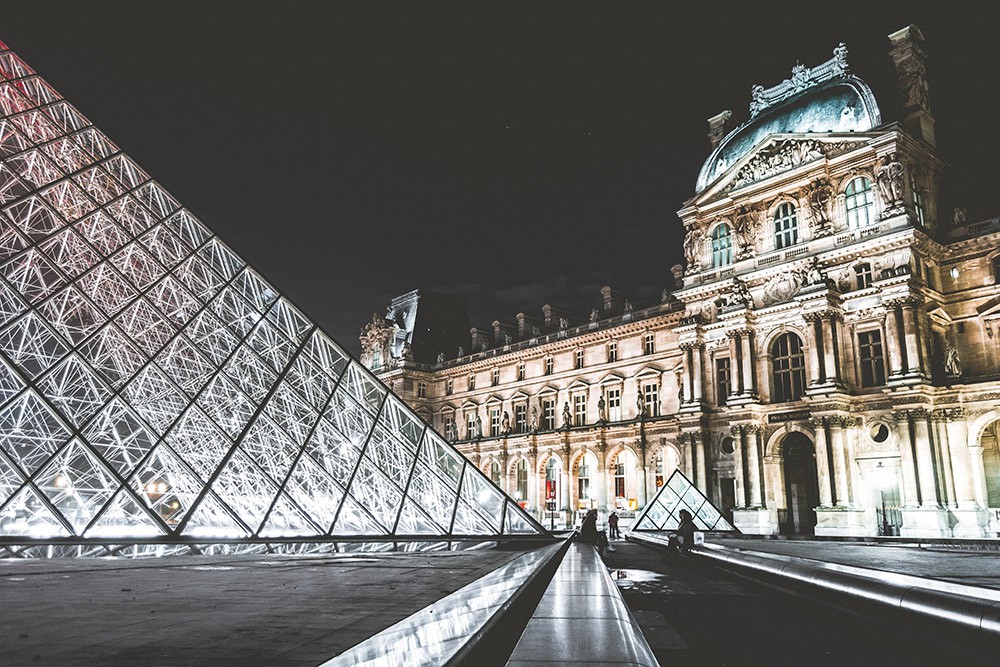
One of the best-selling books of all time, The Da Vinci Code is a whirlwind of a novel that weaves a fantastic story of fiction, fact, and belief surrounding the possibility of a bloodline between Jesus Christ and Mary Magdalene. The Louvre in Paris is the world’s most-visited museum and home to some of the most famous works of art, including Leonardo Da Vinci’s masterpiece: The Mona Lisa. The building and its iconic glass pyramid entrance play prominent roles in the book, as do some of the art displayed within its walls.
Once a palace that housed the private art collections of monarchs, the Louvre became a public museum during the French Revolution in 1793, showing a total of 537 paintings and 184 other works of art. Today the museum owns an incredible 615,797 pieces of work, with 35,000 on display in over 400 rooms and over 490,000 viewable online. Guided tours are offered for a small fee except on Tuesdays as the museum is closed. And with 16 dining options onsite, from a quick coffee & croissant to a sit-down gourmet meal, you can plan to spend the day there to see as much as you can.
We hope this has inspired you to put together your own tour of famous landmarks featured in literature for your next trip. Where to? Check out our France page or Europe page for the latest deals and offers.
By: Kristi Williams
Saveup to70%
Signup for Vacation Deals
Exclusive access to private sales, customized specials & more